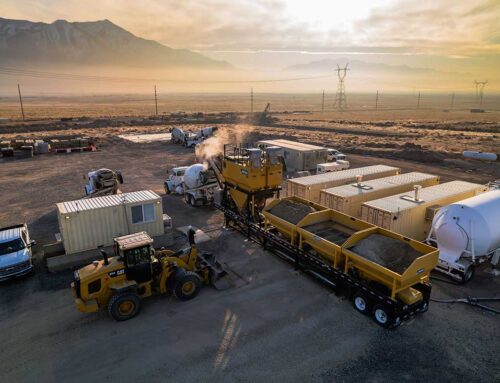Heavy equipment has come a long way over the past several decades. While the equipment went basically unchanged for a hundred years or so, the industry has seen great advancement of late. Although the basic concept of how the machines work has not changed much, today’s machines have more power and utilize modern technology to get the job done accurately and efficiently.
The evolution of the equipment enables good, experienced operators to be wicked efficient – they get the job done quickly while being more precise and accurate than their predecessors. The equipment can also compensate for less experienced drivers, using onboard computers/technology to process information and automate many of the functions while guiding the operator through the process. With the shortage of new workers entering the construction trade today, this advanced technology becomes increasingly important. We need to do more with less…and we can achieve that with modern equipment.
A Brief History
Machines became prevalent across the U.S. in the late 1800’s. They evolved from horse-drawn, to steam-powered, then to diesel powered. The first excavating machine was built during the Industrial Revolution in the 1880’s. The equipment continued to evolve throughout the 20th century, with the first wheeled unit and then the first telescopic boom excavator hitting the market. Forward to the 1950’s when significant advancement was made – the hydraulic excavator revolutionized the industry, eliminating the cable in construction applications.
Today’s Equipment
Today’s equipment is more advanced, utilizing precision hydraulics and electronics. The basic idea of how the machine works is typically the same; the difference is in the technology. For example, an antique grader used a horse to drag or pull a blade across the surface to smooth it out. Today, graders incorporate different levels of horsepower and precision hydraulics, guided by lasers and Global Positioning Systems (GPS), to produce even, precise surfaces.
Modern excavators also utilize machine control, automatically determining geographic coordinates and assessing grade; then linking to computer networks to share information. This technology enables excavators to both load and grade, getting the job done faster and more accurately.
We’ve Come a Long Way
Earth-moving equipment that can excavate and grade soil and rock has come a long way from the days when graders were towed behind horses or attached to a tractor. Today’s high-capacity machines utilize hydraulics and electronics to move large volumes quickly. They are more fuel-efficient and produce less carbon emissions than their forerunners.
At Grade Tech, we place a high value on using the most modern technology available and are committed to maintaining a modern fleet of equipment. From GPS-enabled heavy equipment to rock slingers and contemporary software, we believe in staying on the cutting edge and continue to invest in the latest equipment in order to provide the highest quality service at a fair price.







Awesome post! Keep up the great work! 🙂